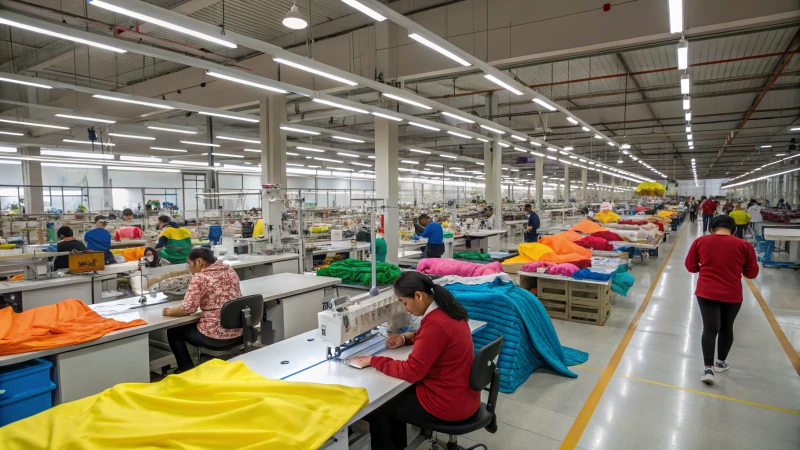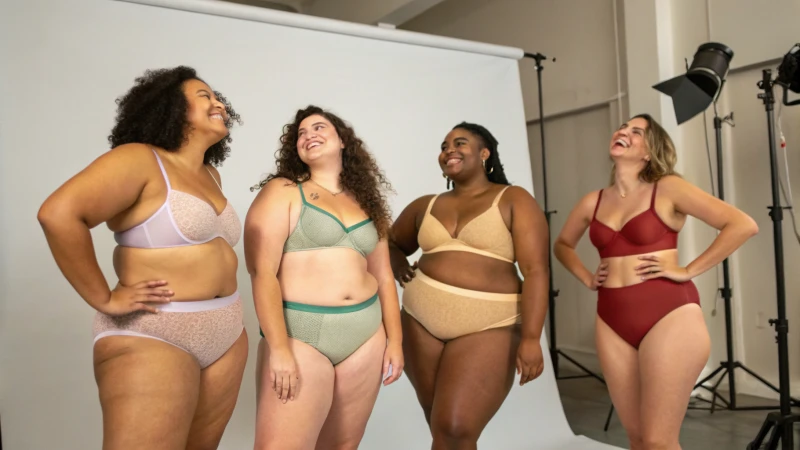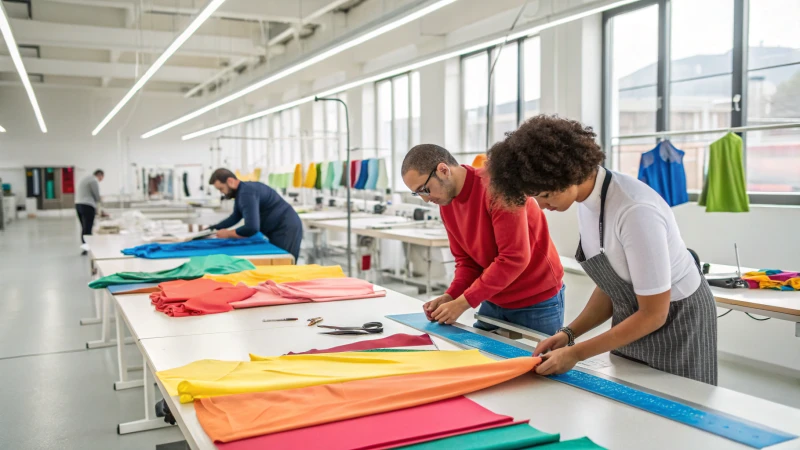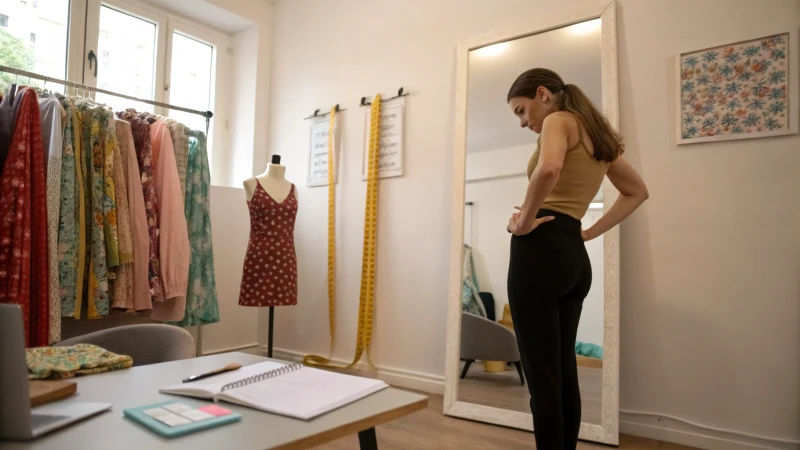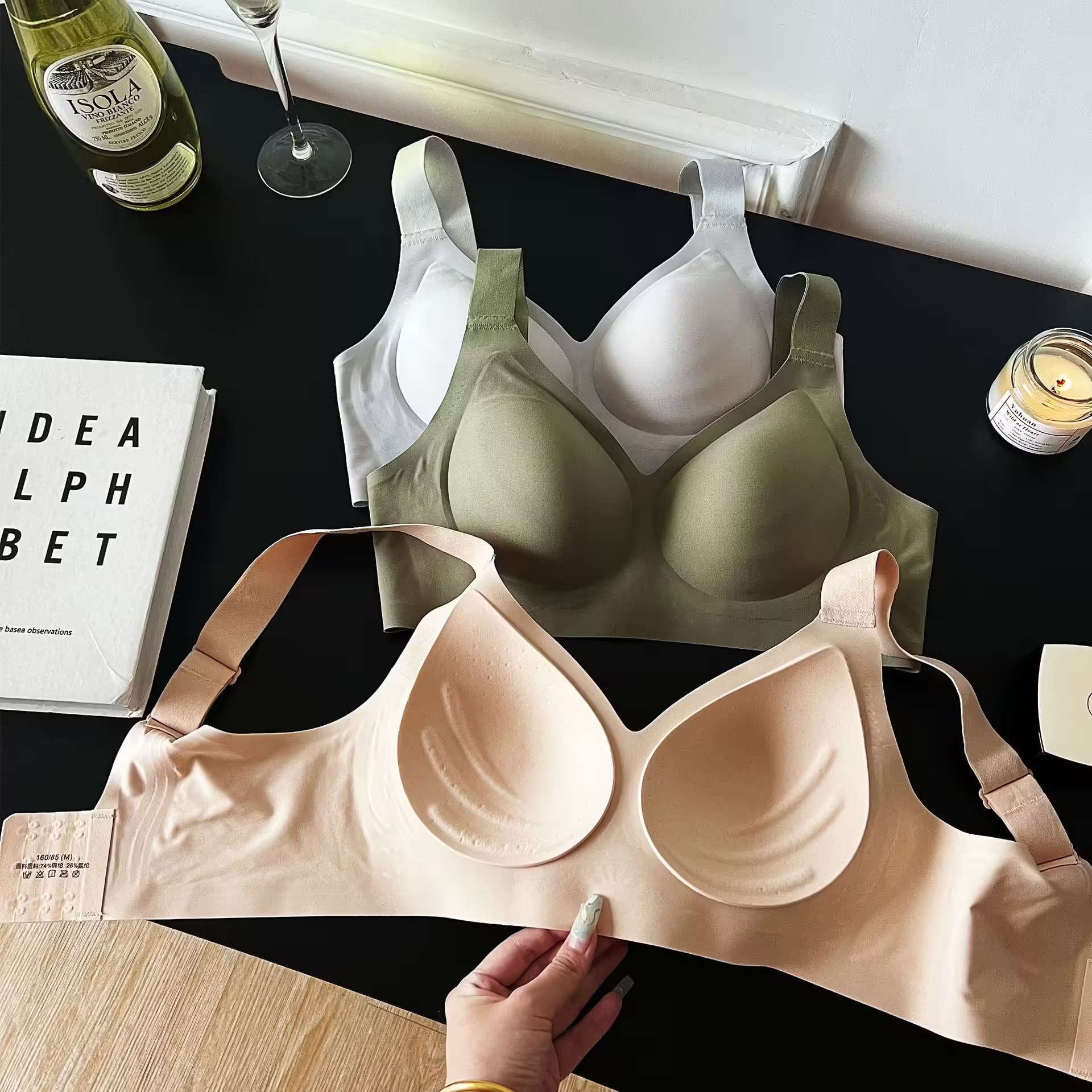
Have you ever wondered if the fashionable underwear you just put in your online cart is genuine?
I often begin by spotting unrealistic discounts to identify fake underwear online. High-quality branding should appear in the images. I also verify the seller's credibility. Product details like fabric and stitching need examination. Packaging requires a careful look too. Anti-counterfeit features such as QR codes or holograms really help.
These steps helped me a lot. However, there's much more to learn about how to check if every purchase is true and really good. Let's explore more tips and ideas. These will help us know what to buy and keep our money safe.
Counterfeit underwear often has unrealistic discounts.True
Counterfeit products are frequently sold at prices much lower than genuine items.
All online sellers of underwear are reputable.False
Not all sellers have a good reputation; some may sell counterfeit goods.
What Are the Common Red Flags of Counterfeit Underwear?
Picture the shock of purchasing luxury underwear, only to discover they are fake! I've experienced this myself and believe me, it's no fun at all. Let's find out how to identify the fakes.
Fake underwear often shows poor stitching, mismatched logos and strange fabric quality. Brand names might be misspelled too. Genuine products come from trusted shops. Check packaging details carefully. Always verify authenticity thoroughly.
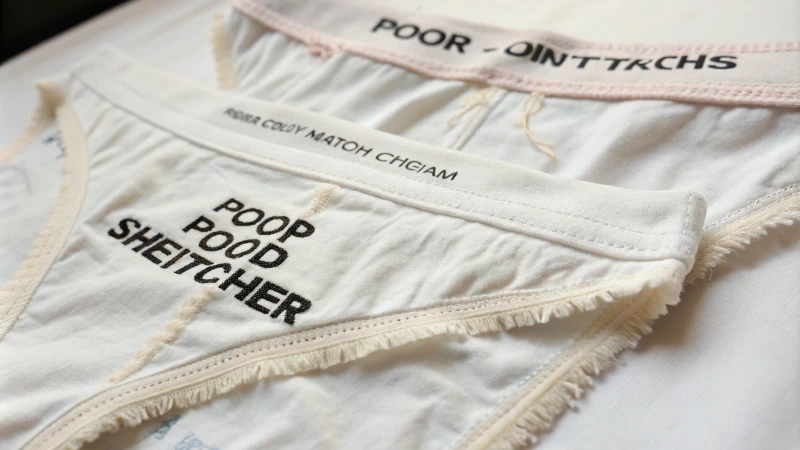
Inspecting Fabric and Stitching
Quality fabric and clean stitching are hallmarks of authentic underwear. The fabric should feel pleasant to touch immediately, as cozy as a loved old t-shirt. Counterfeit products often use inferior materials and exhibit loose threads or uneven stitches. I once bought underwear that fell apart after one wash. That experience taught me to always compare with real products.
Analyzing Branding and Labels
Genuine brands maintain consistent labeling with accurate spelling and logo placement. I once bought a product online with a logo that seemed drawn by a five-year-old. Strange logos or weird fonts often indicate counterfeits. Always check for discrepancies in color, font, or logo size, as these are common indicators of fake products.
Scrutinizing Packaging Quality
Authentic packaging is typically branded with high-quality materials. Packaging often reveals the truth; I opened a package that looked real but had weak materials inside. There were no holograms or proper labels. Counterfeit underwear often comes in cheap packaging without protective features like holograms. Review the packaging carefully for any inconsistencies or missing elements.
Checking Seller Credentials
Purchase from official or verified retailers to avoid counterfeits. Buying from trusted sellers remains very important, like reading reviews before a film—it gives peace of mind. Look for sellers with positive reviews and established reputations by checking customer feedback1 and ratings on trusted platforms.
Evaluating Price and Discounts
Unrealistic discounts can be a major red flag. Getting deals that look too good should raise suspicion; if a deal seems too good to be true, it probably is. Compare prices with official retailers to identify suspiciously low offers.
| Factor | Authenticity Indicator |
|---|---|
| Fabric Quality | Soft, durable, elastic |
| Stitching | Even, clean, no loose ends |
| Branding | Correct logos and labels |
| Packaging | High-quality, branded |
| Seller Verification | Official retailers only |
| Pricing | Realistic and consistent |
Utilizing Anti-Counterfeit Features
Many brands incorporate features like QR codes, holograms, or serial numbers to authenticate products. Some brands add anti-counterfeit elements like QR codes or holograms—confirm these before buying; it's like having a personal authenticity check. Always verify these features before purchasing by exploring the brand's official website2 for instructions on using these tools.
Understanding Market Trends
Counterfeit trends change over time; staying informed can help you spot fakes by following updates from fashion experts and industry reports3. Keeping up with market trends remains crucial—I learned about well-hidden counterfeits this way and became a better shopper.
By being vigilant and informed while using smart shopping habits, you can significantly reduce the risk of purchasing counterfeit underwear—avoiding fake traps ensures you secure your quality purchase.
Counterfeit underwear has uneven stitching.True
Counterfeit products often have loose threads or uneven stitches, unlike authentic items.
All cheap underwear is counterfeit.False
Not all inexpensive underwear is fake; some brands offer affordable genuine products.
How do you verify a seller's authenticity?
Online shopping might seem confusing. Checking if a seller is real helps avoid tricks. Discover how to trust a seller's honesty.
To check if a seller is real, review their feedback. Look at product pictures closely. Confirm their contact information. Use the platform's tools for checking sellers. These steps help in safe online shopping. These steps are very important.
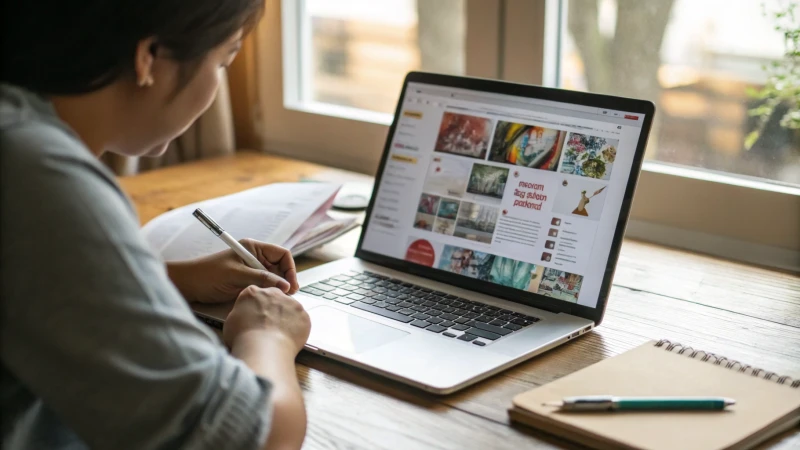
Check Seller Reviews and Ratings
Peeking into seller reviews feels like receiving secret advice from a trusted friend. Reviews serve as your backstage pass to learn about a seller's honesty. Once, I was interested in a vintage leather jacket online. Diving into reviews, I found many compliments for prompt delivery and excellent quality - exactly what I needed. Sparse reviews or many negative comments suggest avoiding that seller.
Look at Product Images and Descriptions
Pictures tell a lot, especially for online shopping. Real sellers display products with clear, high-quality images. I once saw designer shoes at a surprising price. The images looked strange, so I compared them with official brand pictures and found differences. Trust me, if something seems off, it probably is. Descriptions should be clear and match brand specifications you expect.
Message the Seller Directly
Contacting sellers directly often reveals much. Honest sellers usually reply quickly with detailed information or more images if you ask. I remember asking about a rare collectible; the seller's fast and helpful reply assured me of their legitimacy. If your message gets no answer or vague responses, it's often a sign to be careful.
Use Platform Verification Features
Use specific platform verification features; they exist to provide peace of mind. For example, eBay's Authenticity Guarantee4 covers some items, checked by experts before reaching you. It acts like a personal watchdog, making sure your purchases are real.
Monitor Seller's Inventory Practices
Keep an eye on a seller’s inventory. Sellers who update stock often and offer many authentic items are usually more reliable. Some inventory tracking tools5 help with this, giving you an advantage in checking product availability.
Table: Key Verification Steps
| Verification Step | Description |
|---|---|
| Check Reviews | Ensure consistent positive feedback from customers |
| Inspect Photos | Compare product images with official brand photos |
| Direct Contact | Communicate to clarify doubts about the product |
| Platform Verification | Use platform-specific authenticity programs |
| Inventory Practices | Monitor regular inventory updates for consistency |
Seller reviews and ratings always guarantee authenticity.False
Reviews can be manipulated; they are not foolproof indicators of authenticity.
Platform verification features enhance transaction security.True
These features provide additional checks, reducing the risk of fraud.
How Does Packaging Help Spot Counterfeits?
Have you ever purchased something online, only to discover it does not seem quite right? The packaging might be your first hint.
Packaging plays a crucial role in identifying fake products. It displays special brand elements and uses good quality materials. Security features, like QR codes and holograms, also appear on packaging. These tools help shoppers verify authenticity and guard brand reputation. Packaging is really important.
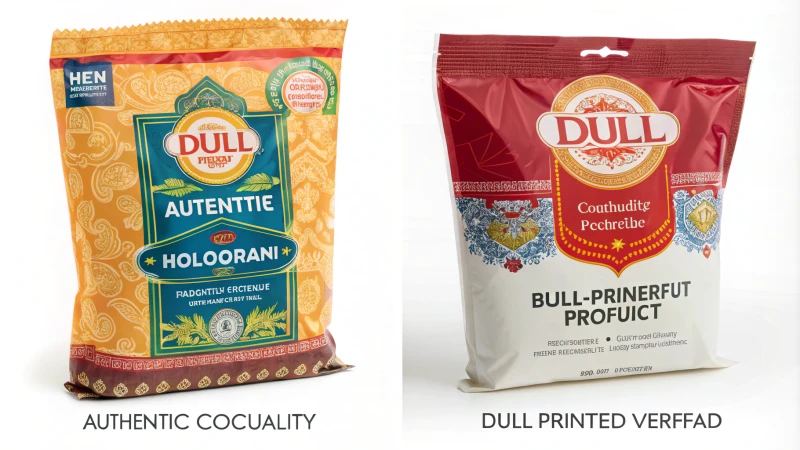
The Role of Branding Elements
Once, I bought a fake product without knowing. It was a designer bag that looked perfect online. But when it arrived, the logo was slightly wrong. At that moment, I understood how much real brands invest in their packaging. Genuine products usually have logos, colors, and fonts hard to copy well. Really genuine brands care about these details.
Examining these elements closely can help identify counterfeit products6. Discrepancies in these details often indicate a fake.
Quality Materials and Craftsmanship
Have you ever held a product that felt cheap? Real items often impress with their packaging. They use materials that reflect high quality. Imagine comparing a thin plastic wrapper to a strong, eco-friendly box. It's not only about how long it lasts but also the rich feeling it provides. Authenticity really shines through quality materials.
For instance, the use of eco-friendly materials7 or premium packaging can be a telltale sign of authenticity. Consumers can inspect the texture, weight, and finish to discern quality.
Security Features
Today, technology helps us find fake products. QR codes or holograms are not just fancy extras; they serve practical purposes. I bought a watch once and a hologram on its box assured me of its authenticity. When scanned, it confirmed the product was real.
These features allow you to check products directly with the brand, giving you peace of mind truly by verifying authentic goods8.
Table: Packaging Features for Authenticity Verification
| Feature | Description |
|---|---|
| QR Codes | Allow verification through official brand websites |
| Holograms | Provide visual assurance of authenticity |
| Unique Serial Numbers | Traceable back to the manufacturer |
By learning about these packaging elements, I now choose products wisely. My purchases are more likely genuine, protecting my investments.
Authentic brands use eco-friendly packaging materials.True
Genuine products often use eco-friendly materials as a sign of authenticity.
Flimsy packaging indicates a genuine product.False
Flimsy packaging is usually a sign of counterfeit products, not genuine ones.
How Do Anti-Counterfeit Features Ensure Product Authenticity?
I once almost purchased a fake designer watch online. Anti-counterfeit features helped me avoid this mistake. These features were really useful.
QR codes, holograms and serial numbers are very important. These features help verify if products are real. They also build trust with consumers. Trust is important. At the same time, they protect brands from fake products. Fake goods pose threats to brands.
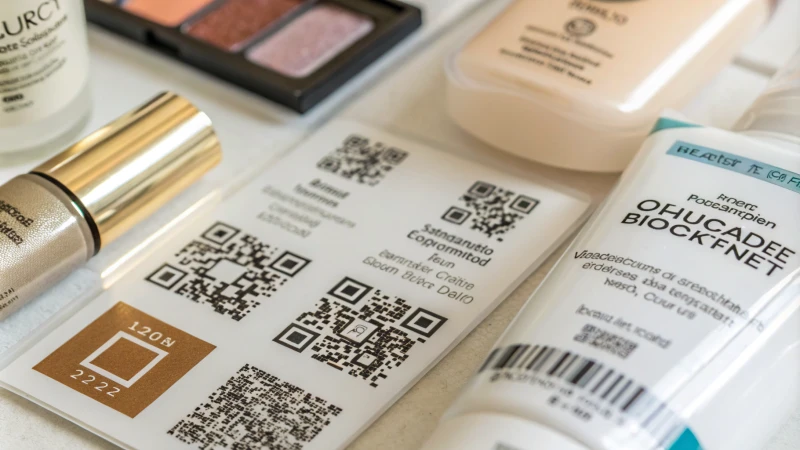
Authentic Products Through Technology
Here's a quick story. I searched online for a luxury watch and found a deal that seemed too good to believe. Just before buying, I remembered to check for anti-counterfeit features. The watch lacked a QR code, which made me pause and look deeper. It turned out to be a fake! This taught me the importance of QR codes and holograms in checking if products are real. They give people an easy method to confirm if a product is genuine. Scanning a QR code can lead directly to a verification portal9 that checks the product's authenticity immediately.
Building Consumer Trust
These tiny details provide a lot of peace of mind. Consumers trust brands more when they protect us from fakes. I noticed that brands using anti-counterfeit features get customer loyalty and repeat shoppers. Serial numbers, for instance, come printed on items like watches or bags. You can verify these numbers with the brand's database to confirm the product is genuine.
Safeguarding Brand Reputation
I have seen how fake products can harm a brand's name. It affects not only sales but also safety and trust. Brands I've worked with use holographic labels10 to separate real products from fakes, making sure only real items go to their customers.
The Financial Impact of Counterfeiting
Counterfeiting is not just an annoyance; it's a huge financial problem. Reports claim it costs industries worldwide billions each year. Using strong anti-counterfeit measures, companies reduce these losses significantly.
| Industry | Estimated Loss (in USD) | Potential Savings with Anti-Counterfeit |
|---|---|---|
| Fashion | 50 billion | 20% |
| Pharmaceuticals | 200 billion | 30% |
| Electronics | 100 billion | 25% |
This data really highlights the importance of these measures for consumer protection and business plans. Using such technologies not only confirms the product's authenticity but also protects market positions and trust. These insights and experiences have increased my appreciation for anti-counterfeit features in today's market.
QR codes help verify product authenticity.True
Scanning QR codes can lead to verification portals confirming authenticity.
Holographic labels are used in pharmaceuticals.False
Holographic labels are commonly used in luxury fashion, not pharmaceuticals.
Conclusion
Learn how to identify counterfeit underwear when shopping online by examining discounts, seller credibility, fabric quality, branding details, packaging, and utilizing anti-counterfeit features for safe purchases.
Verifying seller credentials ensures you purchase genuine products from reliable sources, safeguarding against counterfeits. ↩
Understanding how to use anti-counterfeit features helps authenticate your purchase, providing peace of mind. ↩
Keeping up with counterfeiting trends helps you identify new tactics used by counterfeiters. ↩
Understand eBay's authenticity guarantee to know how it protects your purchases. ↩
Learn about tools that help track inventory changes, signaling seller credibility. ↩
This link offers tips for spotting counterfeit products by comparing authentic branding details with imitations. ↩
Discover why brands opt for eco-friendly packaging as a marker of authenticity and quality. ↩
Learn about modern security features used by brands to ensure product authenticity and protect consumers. ↩
Explore how QR codes facilitate instant product authentication, enhancing consumer trust and brand reliability. ↩
Discover how holographic labels help distinguish genuine products from counterfeit items, preserving brand integrity. ↩



